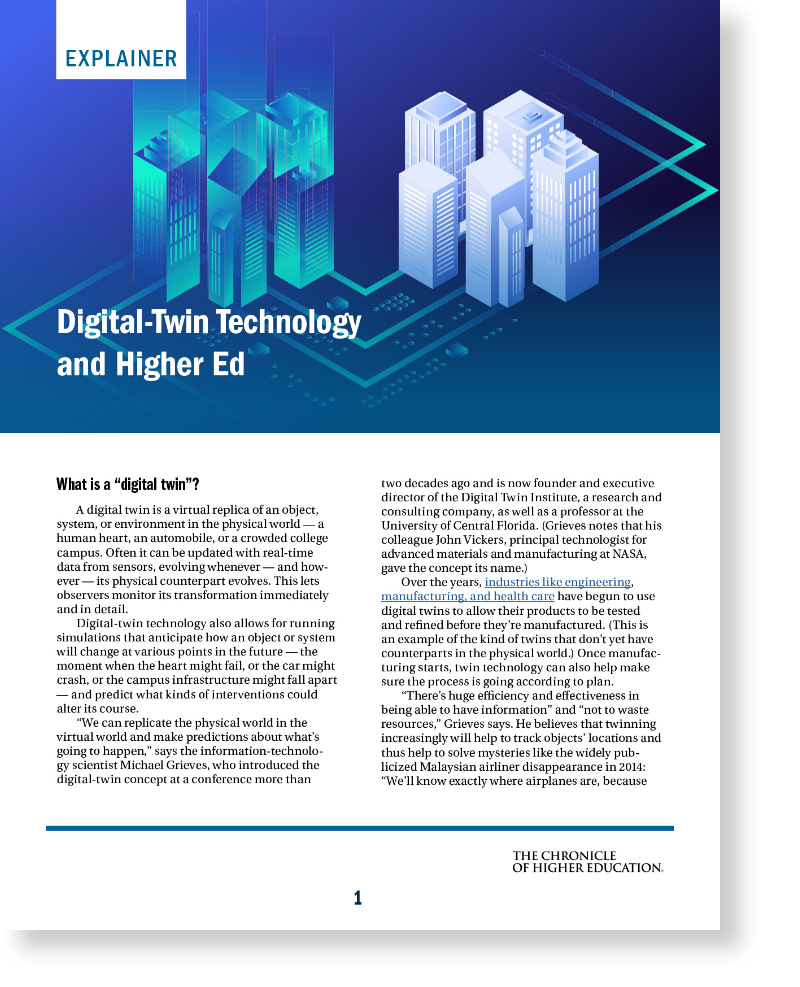

.

A "digital twin" is a virtual replica of an object, system, or environment in the physical world. The technology enables researchers and professionals to run simulations that anticipate how an object or system changes over time.
Within higher education, this presents two major opportunities. Firstly, digital-twin technologies open up ways to improve college operations. Secondly, they can revolutionize how colleges and universities enhance academics, research and learning.
For example, history students could put on virtual-reality headsets and explore a twin of a historical site. Business students could work not just with twins of products, but also twins of manufacturing facilities or supply chains.
In our most recent Explainer, Digital-Twin Technology and Higher Ed, learn more about the implications of digital twins including:
Within higher education, this presents two major opportunities. Firstly, digital-twin technologies open up ways to improve college operations. Secondly, they can revolutionize how colleges and universities enhance academics, research and learning.
For example, history students could put on virtual-reality headsets and explore a twin of a historical site. Business students could work not just with twins of products, but also twins of manufacturing facilities or supply chains.
In our most recent Explainer, Digital-Twin Technology and Higher Ed, learn more about the implications of digital twins including:
- Opportunities for academic institutions.
- Examples of how colleges are embracing the technology.
- Areas of concern around digital twins.
.
A "digital twin" is a virtual replica of an object, system, or environment in the physical world. The technology enables researchers and professionals to run simulations that anticipate how an object or system changes over time.
Within higher education, this presents two major opportunities. Firstly, digital-twin technologies open up ways to improve college operations. Secondly, they can revolutionize how colleges and universities enhance academics, research and learning.
For example, history students could put on virtual-reality headsets and explore a twin of a historical site. Business students could work not just with twins of products, but also twins of manufacturing facilities or supply chains.
In our most recent Explainer, Digital-Twin Technology and Higher Ed, learn more about the implications of digital twins including:
Within higher education, this presents two major opportunities. Firstly, digital-twin technologies open up ways to improve college operations. Secondly, they can revolutionize how colleges and universities enhance academics, research and learning.
For example, history students could put on virtual-reality headsets and explore a twin of a historical site. Business students could work not just with twins of products, but also twins of manufacturing facilities or supply chains.
In our most recent Explainer, Digital-Twin Technology and Higher Ed, learn more about the implications of digital twins including:
- Opportunities for academic institutions.
- Examples of how colleges are embracing the technology.
- Areas of concern around digital twins.
.
.